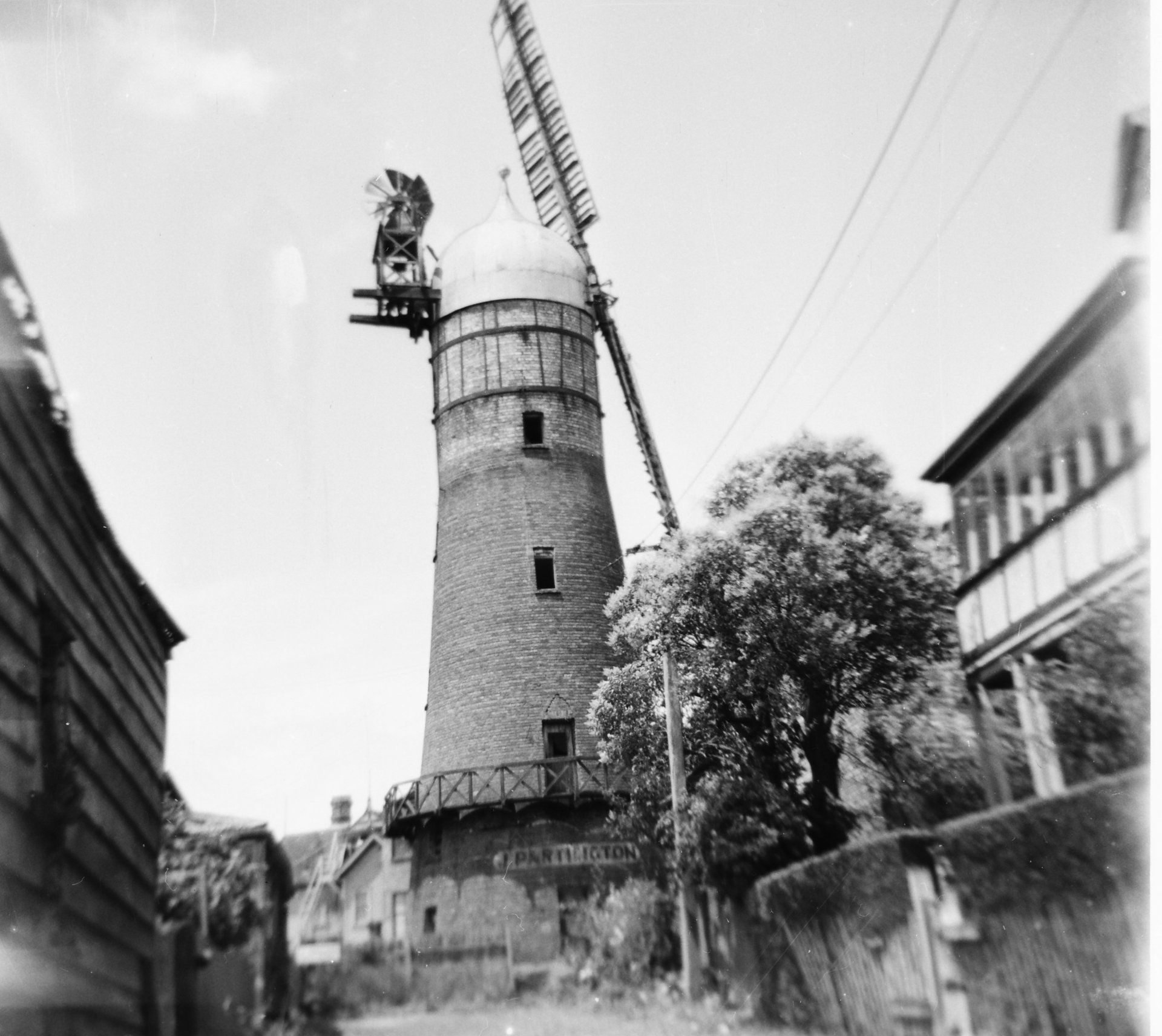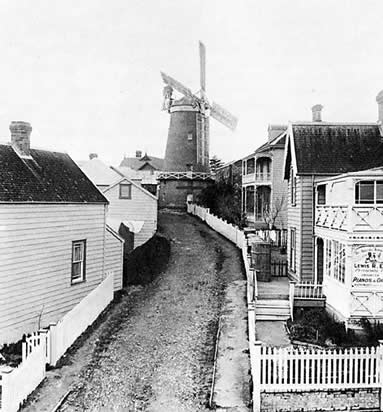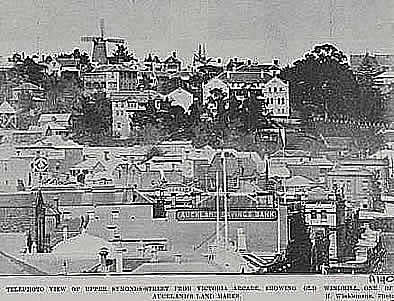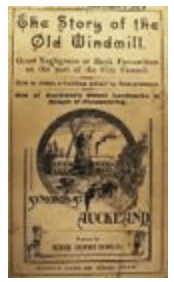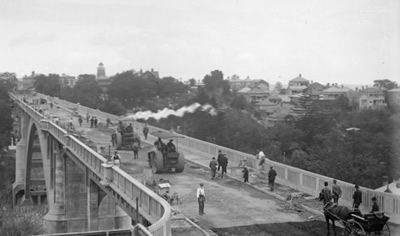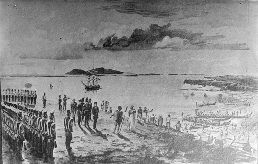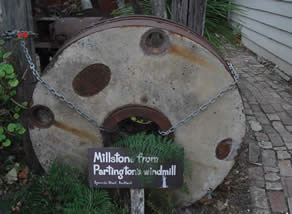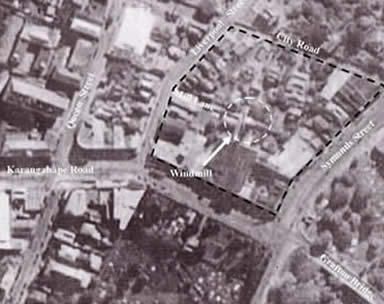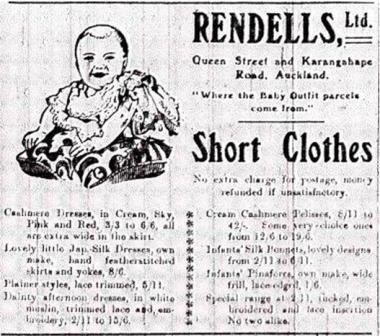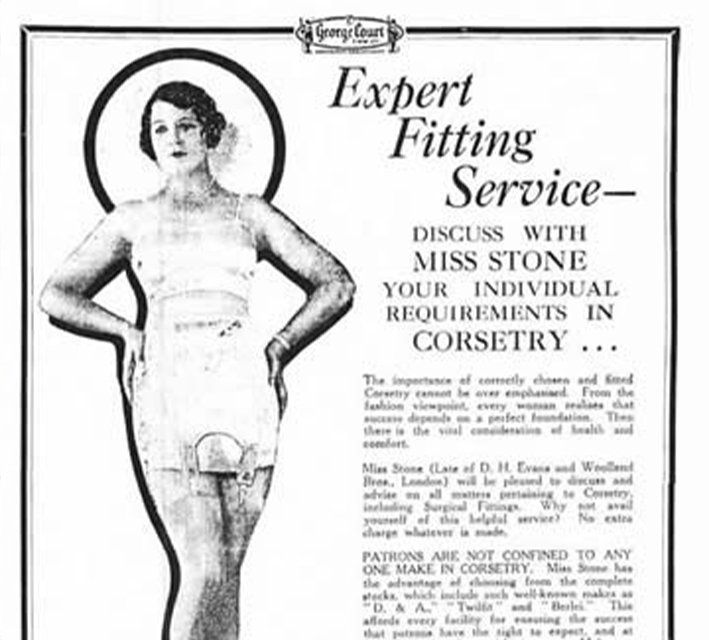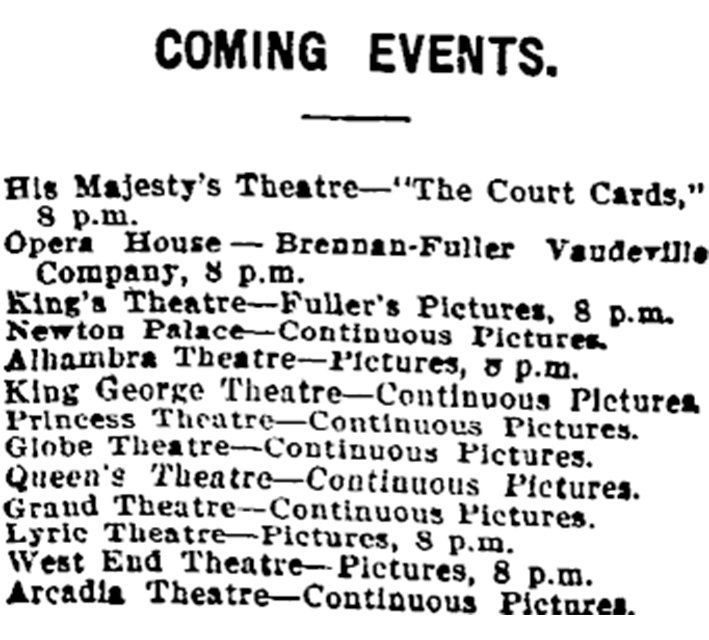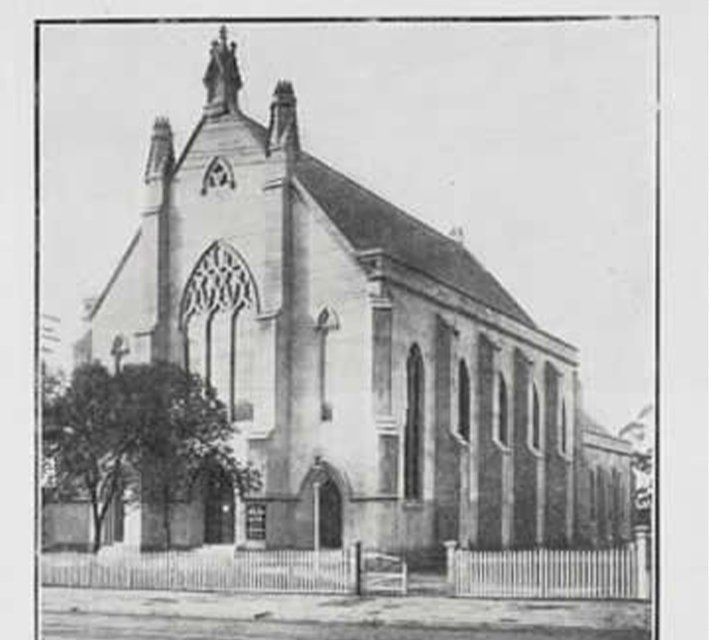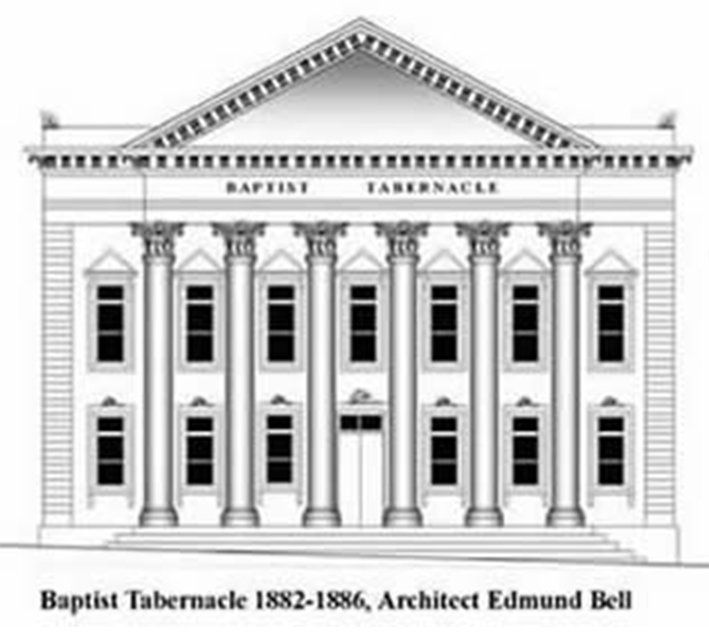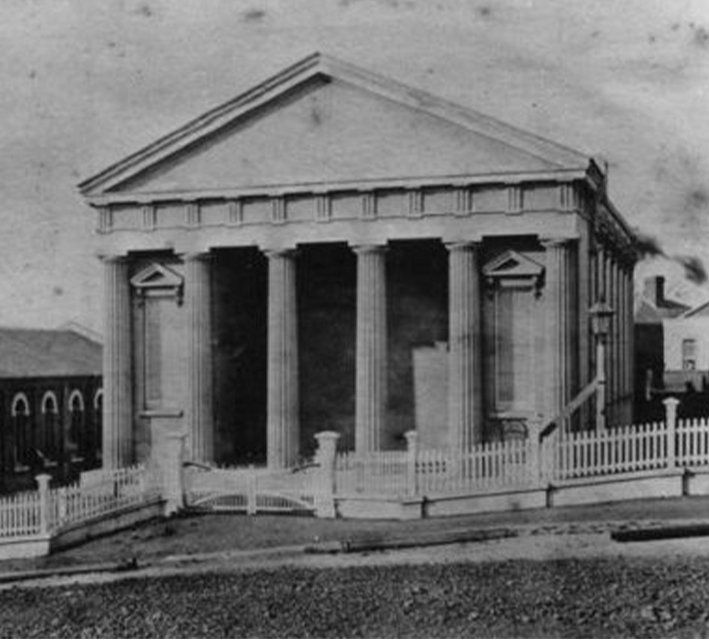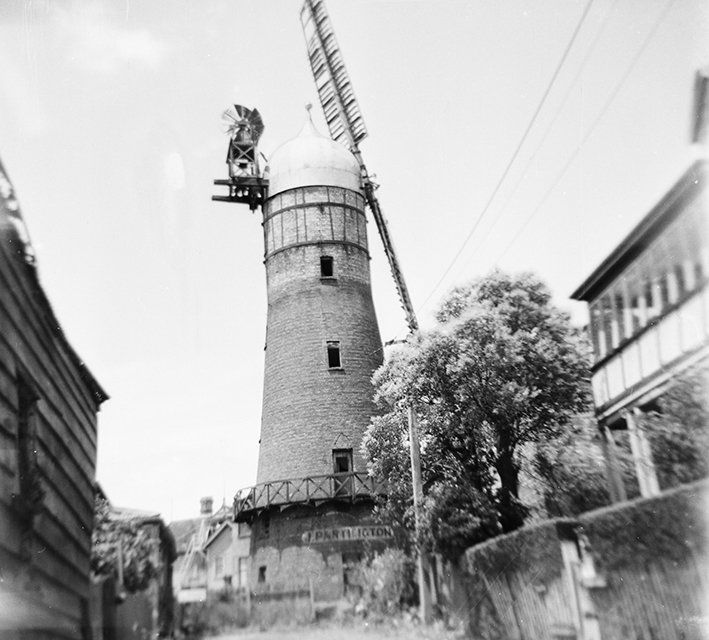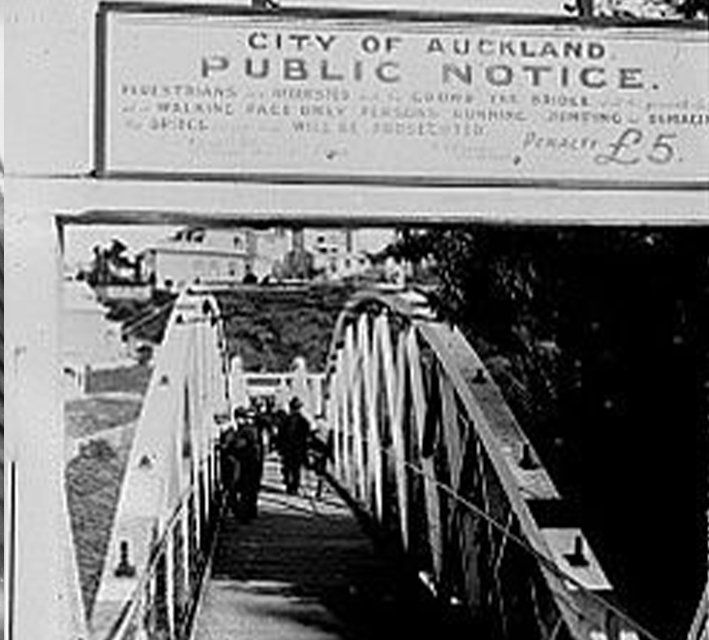Partington's windmill was an Auckland landmark for the first century of the city's history. Built in 1850 it was demolished in 1950.
From it's founding in 1840 until 1864 Auckland was the Capital of the new Colony of New Zealand. For the first few decades the urban area of the town extended little beyond where the Town Hall stands today. There were small hamlets at Panmure, Howick and Onehunga with all three being active ports but the isthmus of Auckland was largely empty farmland. In those days the Greenwoods Corner/GreenLane/Epsom area was notable for fields of wheat, as the soil was free draining and devoid of trees.
View east up Mill lane with Lewis Eady house on right. Circa 1880.
The Victoria Flourmill & Steam Biscuit Factory:
Initially Partington's business was grinding other people grain for their use, eventually he began buying grain in order to sell flour under his own label. In 1851 steam flour milling equipment was installed and the company advertised as the Victoria Flour Mills and Steam Biscuit Factory. Being able to produce large amounts of baked goods established Partinton's as a major firm.
During the Land Wars of the 1860s this technology enabled Partington to secure a very lucrative contract to supply government troops with biscuits. In the late 1860s he had built a watermill at Riverhead.
This period also saw Partington getting involved with gold mining and other business interests in the Coromandel. These may not have gone well, certainly when the gold and silver began to run out many people were hit badly by the subsequent slump.
By 1873 the biscuit making machinery had been relocated to the Riverhead mill and much of the land around the Symonds Street mill was sold off as building sites.
Charles Partington died in 1877, possibly leaving his business affairs in disarray. after a set of legal skirmishes his sons divided parts of the business empire between them; eventually the Symonds Street Windmill ended up being owned by Joseph Partington.
The business did not prosper however and through a series of events by the late 1880s Partington had ended up bankrupt and the tenant of of a man called James Wilkinson (It is possible that only part of the Symonds street property had passed out of Partington's hands).
Telescopic view with the Windmill in the ridge. Circa 1920.
The Libellous Pamphlet:
Partington involved a New Plymouth journalist called George Bentley to write “The Story of the Old Windmill", of which 1000 copies were printed by Albert Spencer.
The Story of the Old Windmill: 1898 George Bentley - Gross Negligence Or Rank Favouritism on the Part of the City Council : One of Auckland's Oldest Landmarks in Danger of Disappearing.
Bentley was subsequently convicted of publishing a libellous pamphlet in September 1898, and imprisioned. Partington was sued by Wilkinson for libel and had to pay £200 in damages with a further £100 awarded plus costs in December 1898. Joseph Partington was once again bankrupt.
Over the remaining forty years of his life Joseph Partington operated the Windmill and the Bakery, at least intermittently. It is unclear whether he ever regained any of the land that was transferred to Wilkinson or sold to others by the Banks during the crisis in the 1880s.
View of Grafton Bridge: This shows it being finished in 1910, with Partington's Windmill in background standing without its sails.
Rebuilding The Mill:
By 1910 the windmill was devoid of its sails and stood over an increasingly urban landscape just yards from asphalted streets with electric trams and motorcars.
Sudden Collapse of Mr J. Partington
When Partington died suddenly in 1941 the War was naturally occupying the attention of most people. A search was made for a Will which definately bequethed the property to the City Council.
As it happened several Wills were found - some of these were contradictory and apparently none specified the Bequest of the Symonds Street Windmill.
This led to a problematic legal situation which played out over the several years following Partington's death in 1941.
Search of Old Windmill
Despite Joseph Partington's very public statements that he wanted the City Council to receive the property as a Public Facility the lack of a definate will complicated matters.
The “gift" came without any funds for upkeep and the Council, weary after a decade of the Great Depression was now involved in mobilising for the War Effort. The City Council was far from enthusiastic about accepting a decaying structure which would be difficult to utilise.
By this time the Fire Board had secured another site for its new Central Fire Station (opened on the corner of Pitt Street and Greys Avenue in 1944)
The Council was unsurprisingly reluctant to commit public funds for any new project and so did not press it's legal possession of the site.
The property, optimistically valued at £100,000 was eventually divided and sold on behalf of the Partington beneficiaries.
Sale at £20,000
This did not mean the immediate demolition of the Windmill however.
As one of the oldest landmarks in Auckland and arguably it's most prominent there was a great deal of concern about the eventual fate of the main structure.
The 1940s saw continual efforts to secure it's future even if that mean dismantling the conical tower and re-erecting it elsewhere.
In 1939 the Windmill's military significance was pointed out by local Maori who recalled the famous Invasion of Auckland by the Ngatipaoa on April the 17th 1851.
Auckland’s Turbulent Past
Invasion of Auckland by Ngatipaoa, April 17th 1851
At a time in recent date when the Mill seemed in danger of demolition to make way for a new Central Fire Station, Maori joined in the pleas for its preservation, and it was recalled by one old chief that his father had been a member of the war party that had come from Waiheke Island in 1851 with the intention of attacking the township.
They landed and performed haka on the beach at the foot of Parnell Rise. The old mill and its outbuildings were hastily fortified and loopholed, and many women and children who lived nearer to the mill than to the Albert Barracks (where Albert Park is now laid out) took refuge there under the protection of a small body of soldiers.
19th December 1945
A Final Decision On The Future Of Partington’s Mill
The Windmill Preservation Society
A Preservation Society was formed to save this greatly loved landmark, but its members were unable to raise sufficient money to purchase the building and preserve it for posterity. In May 1950, exactly 100 years after it had been built and amid a great deal of controversy, Partington's Windmill was sadly demolished.
Demolition Of The Mill
Although the Preservation Society was unsuccessful it left a lasting legacy. From the efforts of the members of the Windmill Preservation Society can probably be traced the creation of the Museum of Transport & Technology, Howick Historical Village and the NZ Historic Places Trust.
Partington's Windmill was one of the four key battles fought by the embryonic preservation movement during the early 1950s – the others were Christ Church Taita, Old St Paul's (Wellington) and Bethune & Hunter's counting house (Wellington). These threats helped to forge the National (from 1963, New Zealand) Historic Places Trust.
Although it was intended that the unusual wedge shaped bricks would be saved in the hopes of re-erecting the Windmill the bricks vanished at some point and their fate has never been established. The Mill-Stones are preserved at the Howick Historic Village.
Demolition of the Widmill in 1950
Millstone from Partington's Mill at the Howick Historic Village
Redevelopment
The entire block between Liverpool Street and Symonds Street was redeveloped around 1980 when all the buildings were demolished and several large buildings arose, including the Sheraton Hotel, (now the Cordis Hotel).
From aerial photos taken in the 1940s it would appear that the brick tower of Partington's Windmill was situated in what is now the courtyard to the west of the Hotel development. Access to the centre of the block still follows the course of the old Mill Lane.
The contents of this page was compiled by Edward Bennett. For more Karangahape Heritage visit his Facebook Page K' Road Heritage.
Aerial view from the 1940s showing the Windmill
Subscribe to the
Karangahape Road newsletter...
NEWSLETTER
Thank you for signing up for our newsletters.
Please try again later.
Karangahape Road Business Association © All Rights Reserved 2020
Made by Monster Valley & This Needs Doing
AUCKLAND TRANSPORT JOURNEY PLANNER:
Find out your best route to Karangahape Road by bus, ferry or train.


